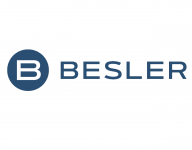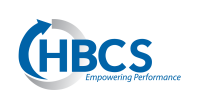The Advisory Board found that 89 percent of patients want to know their medical costs before receiving care. And that percentage is only expected to grow as healthcare becomes more consumer-centric—and as the financial burden continues to shift to patients through mechanisms like high-deductible health plans or self-funded employer plans.
While demand for more information increases, many providers grapple with what it means to provide pricing transparency. It’s not enough to post your chargemaster online and hope that patients will find what they’re looking for. In the 30 states where hospitals are required to post standard charges online, usage of such information is low because it’s difficult to find, navigate and understand.
Ready to transform this clunky, confusing process and adopt a more helpful pricing transparency program? Follow these five best practices.
- Create easy access. Pricing transparency tools should be online, easy to find and navigate to, and optimized for a variety of platforms, such as smartphones and tablets. Digital access also frees up your organization’s resources when your patient representatives or revenue cycle team members aren’t able to respond to individual price requests. A 2017 survey by Public Agenda found that 45 percent of patients seeking cost information have contacted a receptionist, 31 percent have contacted a hospital’s billing department, and 29 percent have contacted a nurse.
- Make the information easy to understand. If the pricing details you post online are too complicated, patients will continue to call patient representatives not just to help them find the information, but also to help understand it. Another result of posting confusing information? Patients won’t utilize pricing information at all in their decision-making and continue to rely on recommendations, says this 2016 New York Times article. The Advisory Board recommends providing patients a single-number estimate versus a range.
- Provide relevant information. Among the challenges with pricing transparency is the variety of patients, services, payers, payment types and discounts that must be accounted for. This complexity is further compounded for organizations that operate in multiple states. Another challenge is the bevy of tests and auxiliary charges that often accompany a primary healthcare service. To be truly relevant, pricing information accounts for specific payment types and encompasses all services any patient can reasonably expect to receive. Your pricing should be based on reasonable averages of ancillary tests and secondary procedures historically performed.
- Be strategic about pricing where you can. Increasingly, patients are looking for low-cost providers, particularly for services like MRIs and X-rays and even some outpatient surgeries. As your organization makes pricing information available to patients, determine where pricing can be adjusted to be more competitive in the marketplace. Use this Advisory Board chart to help you decide how much price sensitivity matters in your market.
- Track metrics related to pricing transparency. By regularly taking a look in the rearview mirror, you can understand utilization patterns and further refine your pricing transparency tool. Important metrics include the utilization rate (i.e. the number of patients who used the tool versus received the service) and accuracy of the estimate (i.e. the estimate and the actual cost of the healthcare service were the same). For scheduled procedures, compare the diagnosis at time of scheduling with the final diagnosis. Fro material deltas, identify physician and service patterns to focus your attention and drive consistency. It’s also smart to take a look at the competitors in your particular marketplace to see how they’re responding to the demand for pricing transparency.
About the Author: Tom Yoesle is the Chief Operating Officer, Revenue Cycle Point Solutions at Parallon.















